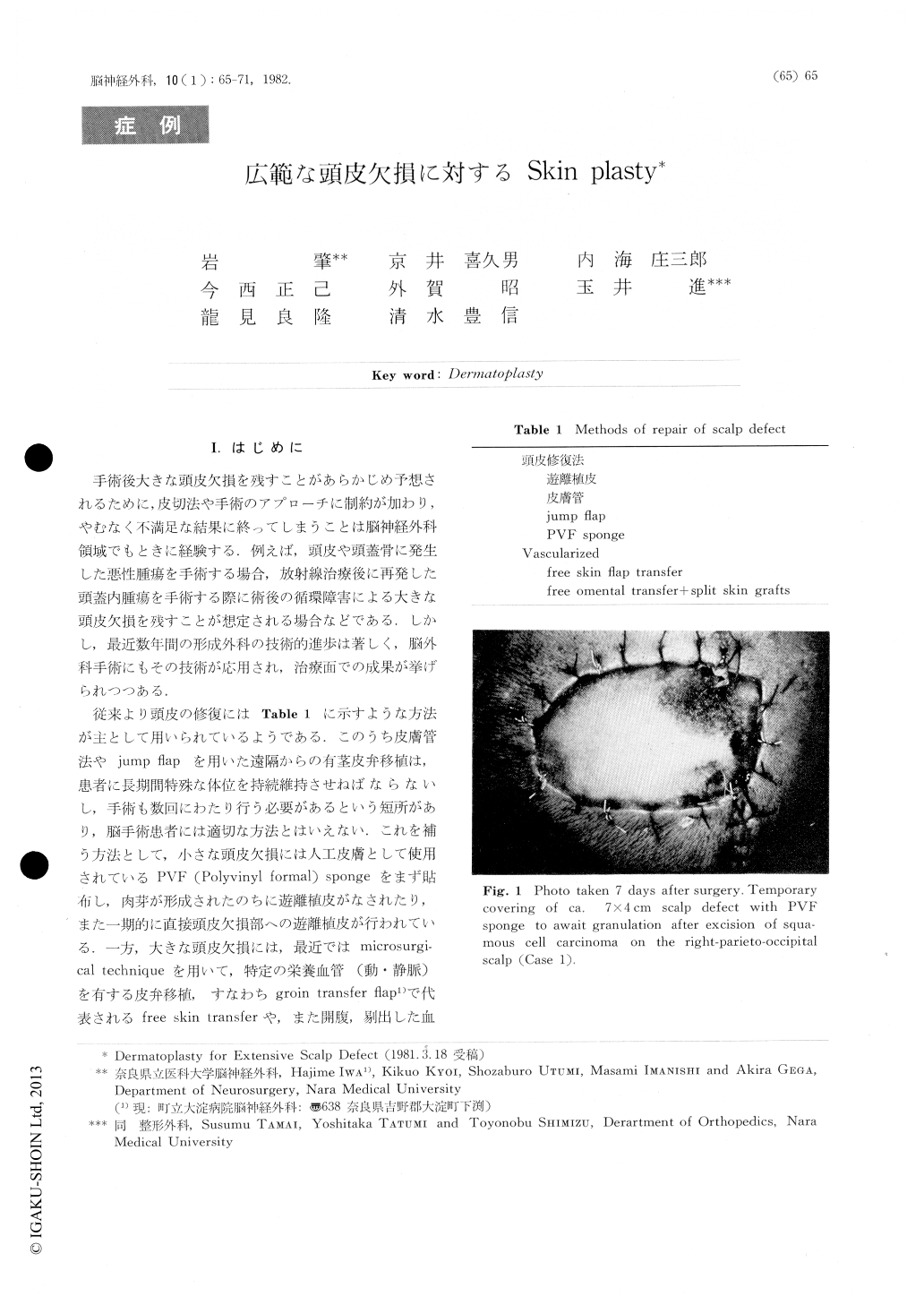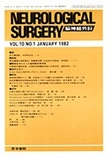Japanese
English
- 有料閲覧
- Abstract 文献概要
- 1ページ目 Look Inside
I.はじめに
手術後大きな頭皮欠損を残すことがあらかじめ予想されるために,皮切法や手術のアプローチに制約が加わり,やむなく不満足な結果に終ってしまうことは脳神経外科領域でもときに経験する.例えば,頭皮や頭蓋骨に発生した悪性腫瘍を手術する場合,放射線治療後に再発した頭蓋内腫瘍を手術する際に術後の循環障害による大きな頭皮欠損を残すことが想定される場合などである.しかし,最近数年間の形成外科の技術的進歩は著しく,脳外科手術にもその技術が応用され,治療面での成果が挙げられつつある.
従来より頭皮の修復にはTable1に示すような方法が主として用いられているようである.このうち皮膚管法やjump flapを用いた遠隔からの有茎皮弁移植は,患者に長期間特殊な体位を持続維持させねばならないし,手術も数回にわたり行う必要があるという短所があり,脳手術患者には適切な方法とはいえない.これを補う方法として.小さな頭皮欠損には人工皮膚として使用されているPVF(Polyvinyl formal)spongeをまず貼布し,肉芽が形成されたのちに遊離植皮がなされたり,また一期的に直接頭皮欠損部への遊離植皮が行われている.
It is an important problem that a large scalp defectis ex-pected after brain surgery, which limits the skinincision andsurgical approach, so that the operation ends in anunsatis-factory way. Such is the case when a malignant tumorofthe scalp or an intracranial tumor, afterradiotherapy, isremoved for the second time.
Until now, to repair a large scalp defect, free skingraftsor skin grafts with stem (skin tube method or jumpflapmethod) have been used. The latter has suchdisadvantagesthat the patient must be kept in a special positionfor a longtime, the operation must be repeated, the techniqueis com-plicated, etc.

Copyright © 1982, Igaku-Shoin Ltd. All rights reserved.


